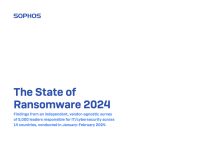Jack Bedell-Pearce, CEO of 4D Data Centres, says planning for resilience was the key to ensuring uptime…

In the wake of investigations by Ofgem, National Grid and the generating companies, into the circumstances around the outage, this is a great time for us to reflect, as a data centre operator, on what happened. The simple answer is: nothing. Customers in our data centre did not see a change in their power supplied, or the operation of their services. Due to having resilient UPS systems and onsite diesel power generators, whenever we see something happen on the National Grid which could impact our power supply, our automated systems fire up the generators to ensure a consistent and continual supply.
Once a month, we do a full building blackout test and run on these systems for at least an hour. This test gives us the confidence that everything in that automatic chain from detection systems, transfer switches, UPS systems and generators all perform exactly as expected – with no panic or cause for concern. We also have an extensive planned preventative maintenance programme to ensure all of the equipment is in the best possible condition when needed.
At precisely 16:53:39, we saw the frequency (normally ~50Hz) drop below the normal tolerance of +/- 0.5Hz from our main grid connection. This has been backed up by the reports seen nationally and from our peer operators with whom we discuss and share information on key information relative to operational effectiveness. While we did not experience any issues at our data centres due to our resilient backup systems, it did impact a number of our employees who were travelling home on Friday. There is a designated protocol referred to as ‘demand control’ (or disconnecting higher power usage customers from the network). You may also have heard this referred to as load shedding.
For large power users in the UK, there is a set response that automatically causes them to disconnect their usage from the electricity supply should the frequency fall below a set threshold, defined in a technical standard referred to as G59/2. I am sure this will be reviewed as to the relevancy and ‘impact’ on the nation as a whole. For protecting the overall electricity network, disconnecting part of the railway network makes a lot of sense. However, there is a heavy impact from that disconnection in comparison to, say, data centres which have the appropriate backup power systems in place.
Ultimately, all of this is will be going through an extensive review from all of the interested parties, and I hope this will guide future policy decisions on protecting the network. These rare events do occur (the last major incident was 11 years ago, in 2008) and act as a huge learning point for all involved.



